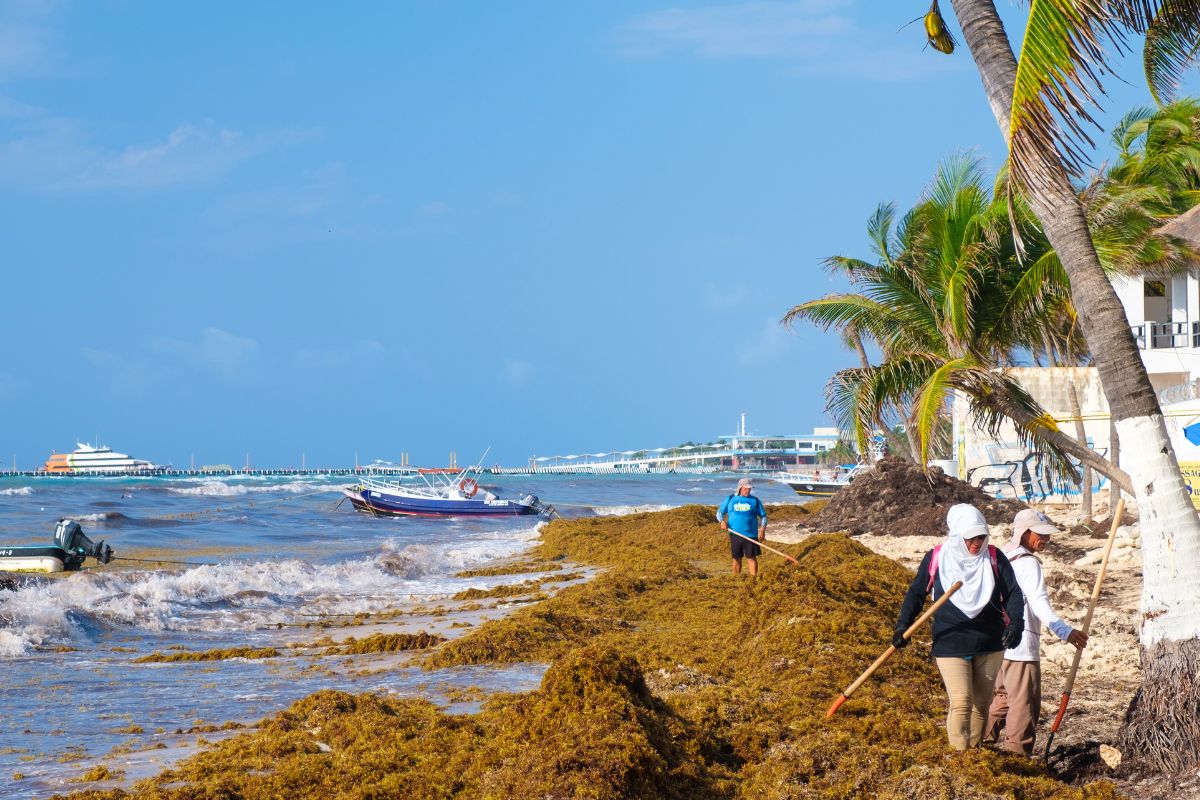Received Playa del Carmen 9,800 tons less sargassum until May 31, compared to the same time frame in 2023. However, the forecasts for this year are not too optimistic.
Such a reduction was attributed to several factors, including low temperatures in the Atlantic Ocean and favorable wind patterns.
Solidaridad, the municipality where Playa del Carmen is located, was one of the hardest hit by the macroalgae.
Although there was a significant reduction in the amount of sargassum reaching Mexico’s Caribbean coast last year, forecasters believe this season won’t be the same, according to their satellite observations.
Lourdes Várguez Ocampo, Minister of the Environment and Climate Change, reported that this phenomenon will worsen due to the high temperatures.
“We have strong sargassum arrivals. We see the effect of high temperatures. We have recorded the arrival of more than 8,000 tonnes of algae between January and now [May 31]. This time it is even worse because the disease is spreading all over the coast.” Varguez said.
Last year’s sargassum season ended abruptly in September – somewhat unusually – leading hoteliers and locals to believe that 2024 could be a better year for the algae. But nothing is less true.
May was difficult for Playa del Carmen’s maritime community. Weather conditions and sargassum forced the port to close to small ships for twelve days.
José Gómez Burgos, president of the Caribbean Sea Nautical Cooperative, said it was caused by a phenomenon called “Surada.” At the time of writing, the port is open to vessels and fishing activities have not been affected.
However, over the weekend an exorbitant arrival of sargassum was observed on the beaches in the center of Playa del Carmen and in the northern part of Solidaridad.
According to the Institute of Oceanography of the Marine Secretariat (Semar), a mass of 216 tons reached the beaches of Mahahual and several areas of Xcalak. 17 tons of algae reached the waters of Tulum and Playa del Carmen, and 24 tons the beaches of Sian Ka’an.
On the other hand, the northern beaches, from Puerto Morelos and Cancun to Isla Mujeres, had very low algae levels.
Workers from the Federal Marine Terrestrial Zone Directorate (Zofemat) have been carrying out cleaning duties to keep the coasts clean and open to beachgoers.
Toni Chaves, president of the Hotel Association of the Riviera Maya (AHRM), reported that the annual cost of sargassum cleanup exceeds $142,6182,500, affecting the competitiveness of the tourism industry.





